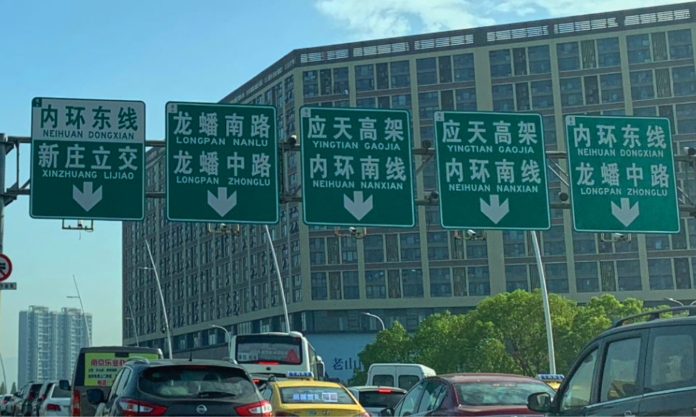There are a lot of cars in Nanjing, getting on for three million now. That’s one for every three people, these days a small family. So with much of the city now on their own four wheels and more arriving on the streets every day, just how does a megalopolis such as Nanjing cope?
It’s an argument as old as the concept of roads comprising multiple lanes itself. As more cars arrive on the roads, simply add more lanes to accommodate them. That’s the conventional wisdom, which these days seems actually far from wise.
It’s also far from practical in the case of roads in a congested urban space such as Nanjing, especially in the downtown area. There is simply no space for any extra lanes.
Hence other solutions need be sought. And this is one field in which Nanjing truly deserves the descriptor, “innovative”.
But before we get to the good news, Nanjing first had to learn from its mistakes. And our city has made some whoppers in its time.
Take Xuanwu Lake Tunnel as an example. At either end of the Tunnel, multiple roads converge, meaning that somehow or another, as many as eight lanes of traffic need to find their way into three. And that’s a piece of division which doesn’t work, especially in Nanjingers’ brains fried after a long day of work.
Then there is the legend that is Kazi Men beside Ikea. The morning traffic jam going into town here is so well known in the local lexicon that when this correspondent made fun of it to the city’s then Party Secretary, video of the encounter went viral.
Kazi Men’s problem stems from the fact that this is not just a part of the city where many roads converge. It’s that those same roads then diverge another hundred metres further on.
The result? A morning rush hour with many drivers who have no other choice but to cross four or five lanes of traffic, in order to be in the right place just down the road.
From left to right and right to left they come; in Kazi Men, there can hardly be a worse example of road layout anywhere. But that all said, even China was likely not prepared for the sheer number of cars headed its way, presenting us with the next problem, one largely peculiar to roads in China.
Therein we find a strategy that has been surprisingly successful in addressing the problem of Chinese drivers refusing to “let them in”. Being the competitive bunch that they are, it’s quite the loss of face for another driver to get ahead.
Don’t. Ever. Let. Them. In.
Rolled out during the past year, many of the city’s key choke points now have large, numbered yellow squares painted in the lanes as they approach the point where they merge. It’s a simple concept; vehicles “take a number” as they approach and merge into the single lane ahead, in their assigned order.
The incredible thing is, the concept actually works (most of the time).
Then there are they who must be Nanjing’s most-loved policemen. These are the cops charged with keeping the traffic flowing smoothly during rush hours. And they have a trick up their sleeves; the right to allow motorists to break the law.
For when they deem that the queues of vehicles have snaked to unacceptable lengths, they will cheerfully wave on drivers through red lights. Allowing an extra 10 or 20 cars a left or a u-turn on a red makes quite the difference to Nanjing’s traffic jams.
Elsewhere, analysts are more than aware that urban traffic often flows predominately in one direction at peak times. Out of the residential suburbs and into the city centre in the morning, and back again at night.
Hence, getting a bit of attention last year was the introduction of Nanjing’s first ever “tidal lane”, occupying just 60 metres of Jinsheng Lu between Bian’an Jie and Zhongshui Lu in Jiangning District.
The concept of tidal lanes is hardly new. Many cities all over the world have them in one form or another. That they be automatic, however, is decidedly unusual. The nature of Nanjing’s automated tidal lane means that it need be solar powered. According to Nanjing Daily, the powered barrier can go for 15 days on a single charge.
The system, however inspiring, is hardly foolproof. Traffic police officers are required to block the lane to traffic in the seconds prior to operation.
Since its introduction in May, 2020, tidal lanes have appeared at several other points in the city which experience the same traffic phenomenon. For example, as the main artery into the part of Hexi’s fintech district where Xiao Mi and Alibaba’s Jiangsu headquarters are located, Yunlongshan Lu received a tidal lane earlier this year. In the morning, it’s three lanes going southward; in the evening, three lanes going northward.
So next time you are stuck in traffic, it’s worth considering just how much worse it could be. After all, this is not Shanghai or Beijing, thankfully.
The measures introduced in recent years, together with the more customary flow controls such as changing the timing of traffic lights and lane assignment, mean our city has one of the most efficient road networks in China.
Sit back and be patient. Just. Don’t. Ever. Let. Them. In.









